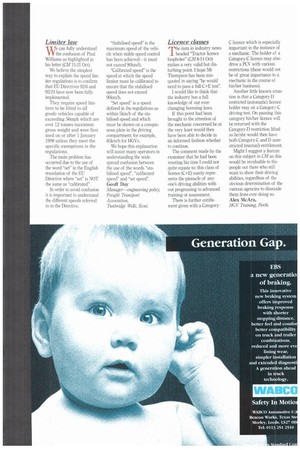Limiter law
Page 29

If you've noticed an error in this article please click here to report it so we can fix it.
We can fully understand the confusion of Paul Williams as highlighted in his letter (CM 15-21 Oct).
We believe the simplest way to explain the speed limiter regulations is to confirm that EU Directives 92/6 and 92/24 have now been fully implemented.
They require speed limiters to be fitted to all goods vehicles capable of exceeding 56mph which are over 12 tonnes maximum gross weight and were first used on or after 1 January 1998 unless they meet the specific exemptions in the regulations.
The main problem has occurred due to the use of the word "set" in the English translation of the EU Directive where "set" is NOT the same as "calibrated".
In order to avoid confusion it is important to understand the different speeds referred to in the Directive. "Stabilised speed" is the maximum speed of the vehicle when stable speed control has been achieved—it must not exceed 90km/h. "Calibrated speed" is the speed at which the speed limiter musi be calibrated to ensure that the stabilised speed does not exceed 90Iun/h.
"Set speed" is a speed defined in the regulations as within 5km/h of the stabilised speed and which must be shown on a conspicuous plate in the driving compartment; for example, 85km/h for HGVs.
We hope this explanation will assist many operators in understanding the widespread confusion between the use of the words "stabilised speed", "calibrated speed" and "set speed". Geoff Day Manager—engineering policy, Freight Transport Association, Tunbridge Wells, Kent.
















































































































